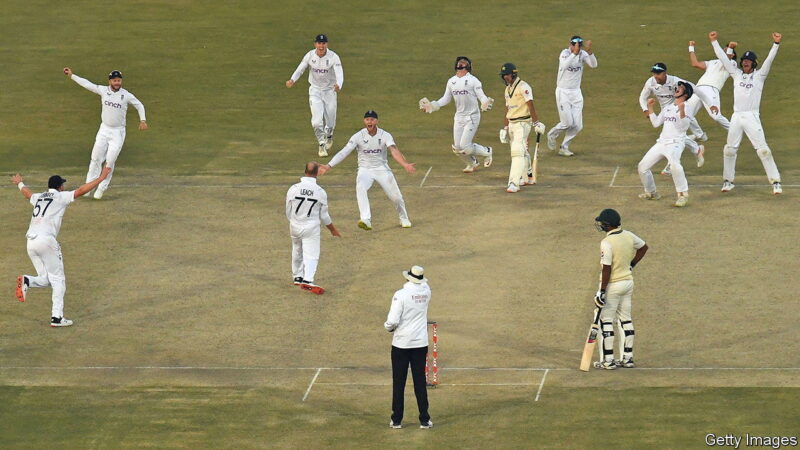Explore the rich heritage of Test Cricket, its unique charm, and why it continues to be the true test of skill, patience, and character in the world of cricket.
Introduction: The Heartbeat of Traditional Cricket
In an age dominated by fast-paced T20 leagues and ODIs, Test Cricket stands tall as the oldest and most prestigious format in the sport. Played over five days with white clothing, red balls, and strategic depth, Test Cricket is not just a game—it’s a battle of minds, endurance, and technique. It’s the format that separates good players from great ones, and teams from true champions.
A Brief History of 5 Days Cricket
The origin of Test Cricket dates back to 1877 when Australia faced England in the first-ever Test match at the Melbourne Cricket Ground. Since then, the format has evolved in terms of rules, strategies, and global reach, but its soul has remained untouched. Unlike other formats, Test matches are regarded as the ultimate stage where a player’s temperament is tested under extreme conditions.
Why Test Cricket is Called the “Ultimate Test”
The name Test Cricket isn’t accidental. It’s a reflection of the very nature of the game. Here’s why it deserves that title:
- Endurance: Playing for five consecutive days demands supreme fitness.
- Mental Strength: Long hours in the field or at the crease test a player’s focus and mental stamina.
- Skill Mastery: Bowlers and batsmen need to outthink each other session after session.
- Team Strategy: Captains and coaches need to make long-term plans that evolve with the match.
Unlike the T20 slam-bang action, Test Cricket allows cricketers to showcase a wide range of skills in dynamic playing conditions.
Iconic Moments in Red Ball Cricket History

Test Cricket is home to some of the most unforgettable moments in cricket history:
- The 2001 Kolkata Test: India’s historic comeback against Australia after following-on remains one of the greatest turnarounds.
- Brian Lara’s 400 Not Out: The highest individual Test score ever, achieved against England in 2004.
- The Ashes Rivalry: A fierce competition between England and Australia that has produced countless memorable contests.
These milestones remind fans why Cricket is the format where legends are born.
Modern Challenges Facing Cricket
Despite its rich history Cricket faces several modern challenges:
- Viewership Decline: Younger audiences are drawn more toward T20 and franchise cricket.
- Commercial Interests: Shorter formats attract more sponsors and broadcasters due to shorter match durations.
- Player Preferences: With lucrative contracts in T20 leagues, players often choose shorter formats over Tests.
However, efforts by boards like the BCCI, ECB, and Cricket Australia have helped maintain interest through innovations like the World Test Championship.
The Role of World Test Championship (WTC)
To reinvigorate interest in Test Cricket, the International Cricket Council (ICC) introduced the World T Championship (WTC). It is essentially a league format that assigns points for each Test series, culminating in a grand final.
- Purpose: Add context and competitiveness to bilateral T- series.
- Impact: Boosted viewership, added a trophy worth chasing.
- Notable Moments: India vs New Zealand in the 2021 final, followed by the 2023 edition between Australia and India.
WTC has given T- Cricket a new narrative, making it more engaging for the digital generation.
Legendary Test Cricketers
Several cricketing greats have made their names primarily through their performances in Test Cricket. Here are a few:
- Sachin Tendulkar – 15,921 runs and 51 centuries in Tests.
- Muttiah Muralitharan – The highest wicket-taker in Test history with 800 scalps.
- Jacques Kallis – An all-round genius from South Africa.
- James Anderson – England’s pace spearhead who has redefined fast bowling longevity.
These players have set benchmarks that inspire generations.
What Makes Test Cricket So Special?
- Changing Conditions
From pitch behavior to weather conditions, no two days in a Test match are the same. - Strategic Depth
Planning a dismissal or building an innings over multiple sessions is only possible in this format. - Fair Balance Between Bat and Ball
Unlike white-ball formats, T-Cricket offers bowlers a better chance with the red ball swinging for longer. - Character Building
Many cricketers believe a player’s true potential is judged by their Test performance
Test Cricket in the Digital Era
While T20 dominates social media and streaming platforms, T-Cricket is slowly finding its space online:
- Live Stats and Analytics: Help fans engage more deeply with the game.
- YouTube Highlights: Bringing classic Test moments to younger viewers.
- Podcasts and Documentaries: Series like The Test (Amazon Prime) have humanized players and taken fans behind the scenes.
Cricket boards and broadcasters are now leveraging digital tools to keep T-Cricket relevant and exciting.
Future of Test Cricket
Despite facing pressure from shorter formats, T-Cricket is far from dead. In fact:
- Day-Night Tests have brought fans back to stadiums.
- World Test Championship adds purpose to long series.
- Crowd Engagement Tactics, like fan zones and digital scoring apps, enhance the viewing experience.
For purists and newcomers alike, T-Cricket remains a compelling spectacle of strategy, grit, and passion.
Long Live Test Cricket.
While the cricketing landscape continues to evolve, T-Cricket retains its unique charm. It is more than just a format—it is the soul of the sport. Every generation of cricketers finds its true worth not in sixes or boundaries, but in how they perform in whites over five challenging days. In an era of instant gratification, Test Cricket reminds us of the beauty of patience, discipline, and legacy.